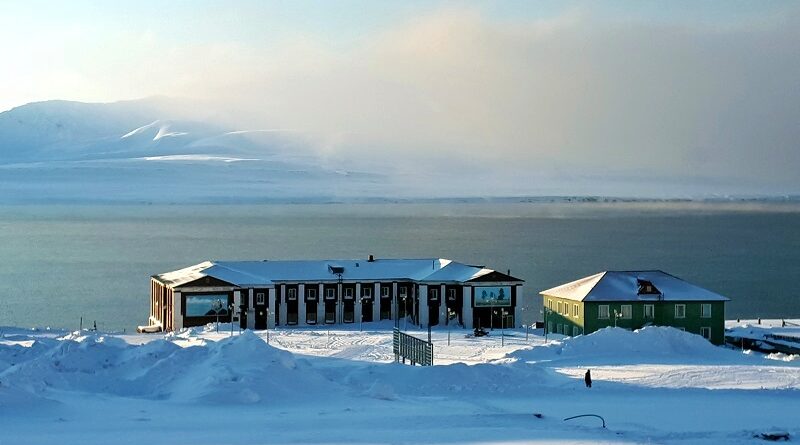Barentsburg: A Visit to a Unique Russian Coal Mining Town
This guide covers a snowmobile tour to Barentsburg, a unique Russian coal mining town that is one of the most popular places to visit on Svalbard.
A trip to Barentsburg
Barentsburg is one of the most unique sights you can visit on Svalbard and an excursion to this Russian mining town makes for an immensely fun day trip from the island capital of Longyearbyen.
The Russian coal mining town of Barentsburg is accessible year-round by ship from Longyearbyen, during winter by snowmobile, and in the brief summer season by ATV (all-terrain vehicle, basically a quad bike).
As local laws on Svalbard dictate that you can only venture out of Longyearbyen if you carry a firearm against a possible attack by polar bears – and it is next to impossible to come by a gun permit and rent a firearm as a visiting tourist – it essentially means that the only viable option to visit Barentsburg is by joining an organised tour.
This was exactly what I did when I visited Svalbard in winter, as I joined an organised snowmobile tour to Barentsburg.
In the previous chapter of this trip report, I covered the practical aspects of joining a snowmobile tour on Svalbard and shared my personal experience, so feel free to read it to learn more about reaching Barentsburg by snowmobile.
In this chapter, I will detail my visit to Barentsburg and share all the sights you can expect to see when taking a tour to this coal mining town.
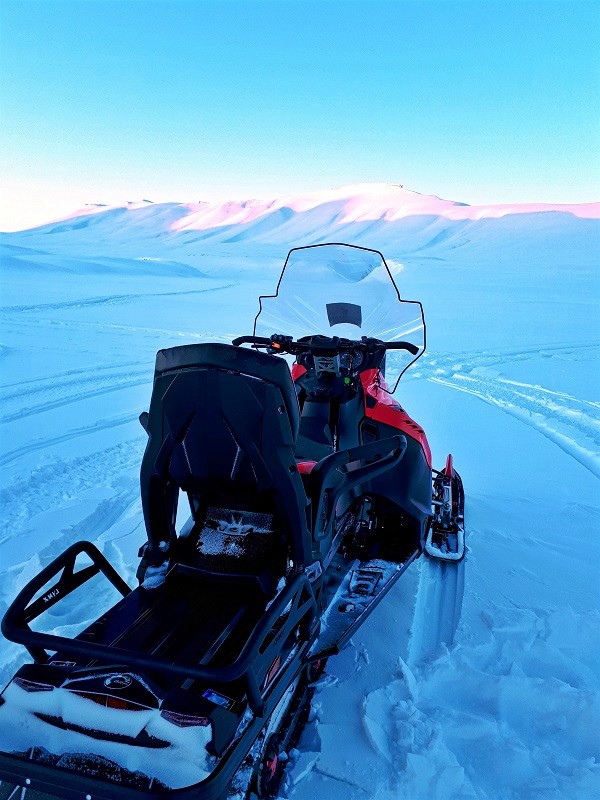


Barentsburg history
Before the Svalbard Treaty was signed in 1920, the archipelago was essentially a lawless no-mans land.
A number of nations, notably the Norwegians, Dutch, British and Russians, held some economic interests, initially in whaling and later in coal mining within this inhospitable Arctic environment.
The 1920 Svalbard Treaty regulated the status of the archipelago, which became a formal part of Norway.
However, the signatory countries of the treaty retained the freedom to engage in commercial activities on Svalbard, including the exploitation of natural resources.
On the shores of Grønfjorden (Green Fjord), the Dutch Spitsbergen Company started a coal mining settlement which they called Barentsburg, named after the famous Dutch Arctic explorer Willem Barentsz.
In 1932, the settlement and mine were bought by a Soviet mining company named Arktikugol, leading to the replacement of predominantly Dutch and German workers in Barentsburg with Russian and Ukrainian miners.
Throughout the years, the coal mining town of Barentsburg remained under the control of the Soviet Union and subsequently Russia.
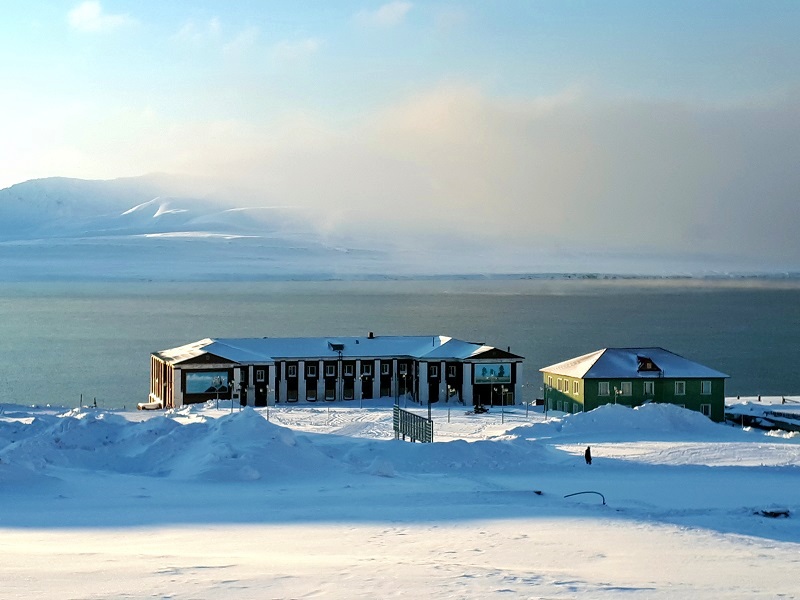
Lunch
Before we started our tour of Barentsburg, we first made a visit to the local hotel where a warm lunch was awaiting us.
We were treated to mushroom soup, various small Russian-style appetisers, and a potatoes and meat dish served in a clay pot.
For beverages, we had the option of coffee, tea, water, and kompot (a homemade Russian-style fruit juice).
It took a considerable amount of time to remove our snowmobile suits before entering the dining room, but the effort was definitely worthwhile.

Tour of Barentsburg
Following the meal, we were joined by a young local Russian guide in her mid-20s, who led us on a highly interesting tour of Barentsburg.
Barentsburg isn’t very large, and you can easily stroll from one end of town to the other in just 15 to 20 minutes.
The town has all kind of facilities and services which a community needs to sustain itself, even though basic food supplies must be sent in by ship from Russia and Germany a few times a year.
The town features a grocery store, a medical facility, a hotel and a hostel, along with accommodation units for all the workers.
Barentsburg even has its own microbrewery, the aptly named ‘Krasniy Medved’ (Red Bear), although sadly enough I couldn’t visit their brewpub as I had to drive the long way back to Longyearbyen by snowmobile.


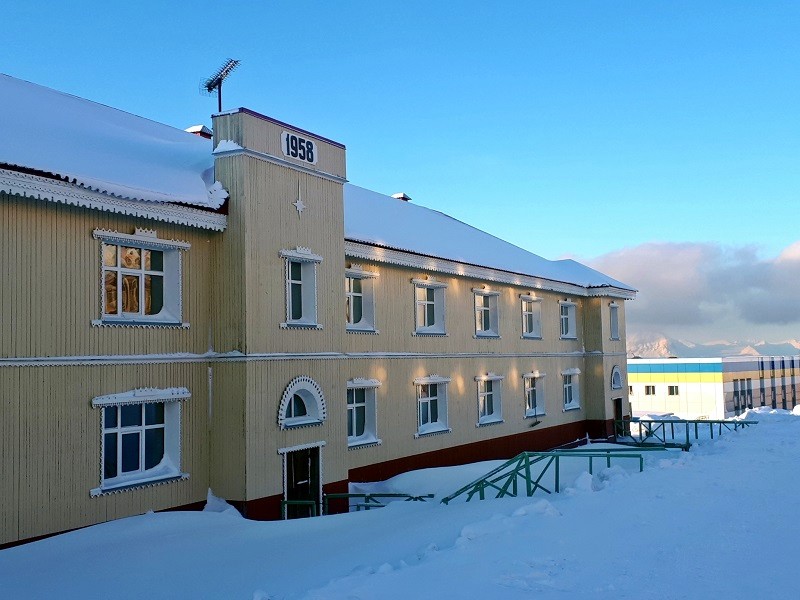

Coal mining operations
While the town does receive some revenue from tourism, coal mining remains the primary economic activity in Barentsburg.
Estimates suggest that the sole mine in Barentsburg still contains sufficient coal reserves for profitable extraction until 2050.
After extraction, the coal is taken from the mine through underground galleries to the docks along the fjord, where once every few months a bulk carrier stops by to collect it.
A significant amount of coal is however used locally in the local power plant, which provides electricity and heating for the community.
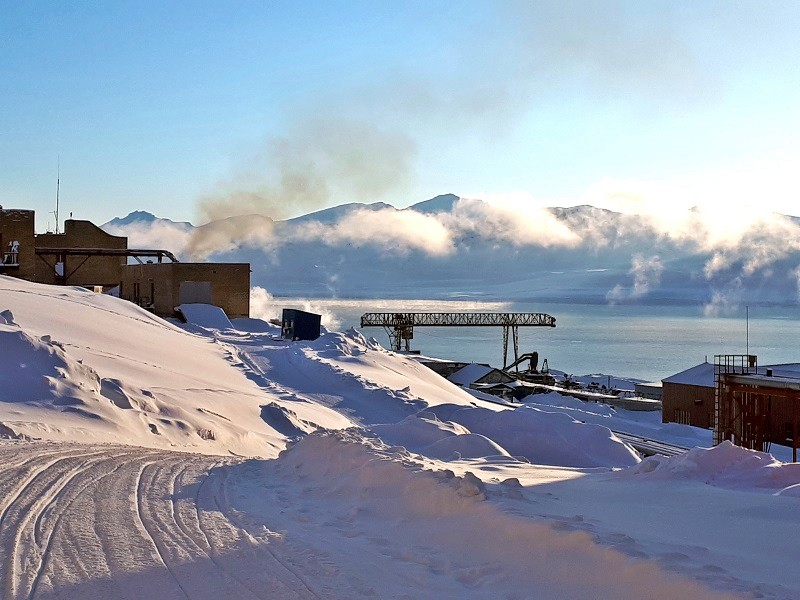
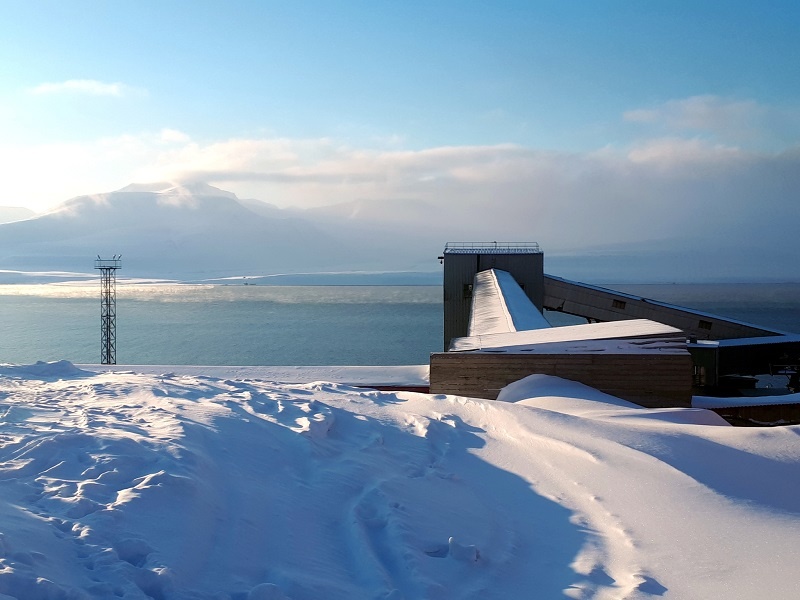
Arktikugol
The complete coal mining town of Barentsburg is under the ownership of a company named Arktikugol, which translates to ‘Arctic Coal’.
Arktikugol is owned by the Russian Government and headquartered in a bright red, modern building which you can’t really miss when you visit Barentsburg.
I do like the Arktikugol’s logo with a white polar bear, which also features on Barentsburg town seal.
Throughout most of its history, Arktikugol employed both Russian and Ukrainian miners, with the latter group mostly hailing from the coal-rich Donbas.
Sadly, just like the rest of Russia, also the local authorities in Barentsburg went completely crazy after Putin’s invasion of Ukraine, and even started organising military-style parades.
Unsurprisingly, almost all of the Ukrainian miners have since left Barentsburg.

School
The miners who work in Barentsburg often bring their families with them to the Arctic.
Therefore, there are a kindergarten and school as well in Barentsburg, and both of them are housed in a stone building with some colourful paintings on the wall depicting orcas and the typical onion domes of Russian Orthodox Churches.
In total, there are three teachers employed by the kindergarten and school in Barentsburg.
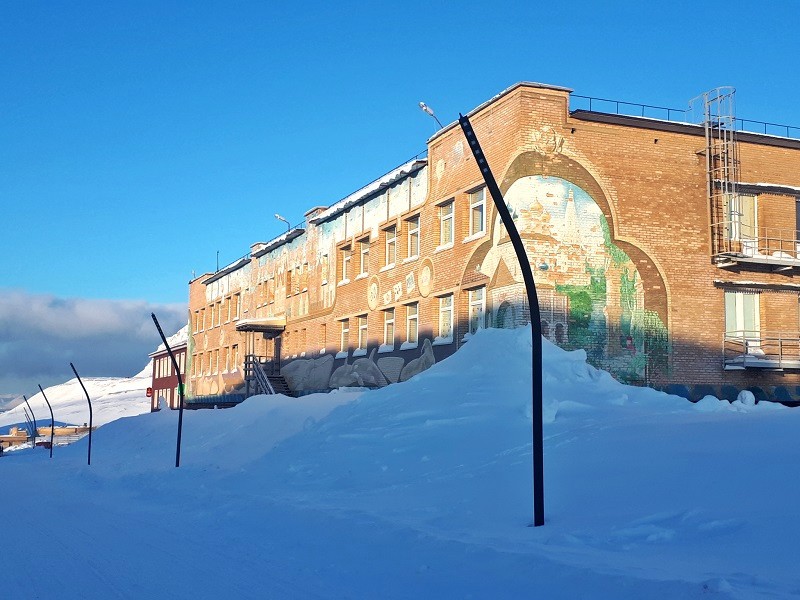
Post office
Next to the school is the local post office, which is run by the Norwegian Post.
All outgoing mail is transported through Longyearbyen and the Norwegian mainland.
The post office also features a small exhibit showcasing old postal artefacts and serves as a souvenir shop.
I couldn’t resist purchasing a red t-shirt featuring the town’s awesome polar bear logo and the name Barentsburg written in Cyrillic letters.
For those who might be curious, despite being a Russian mining town that’s essentially managed by the Russian government, the prices at the Barentsburg post office were denominated in Norwegian Crowns (NOK).
Given that it’s Norway, you can naturally make card payments even at this remote Arctic outpost.
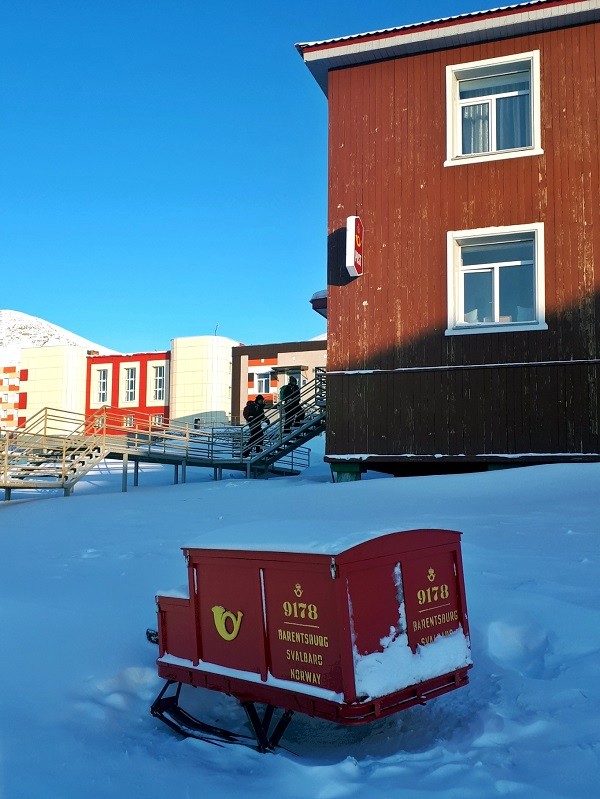

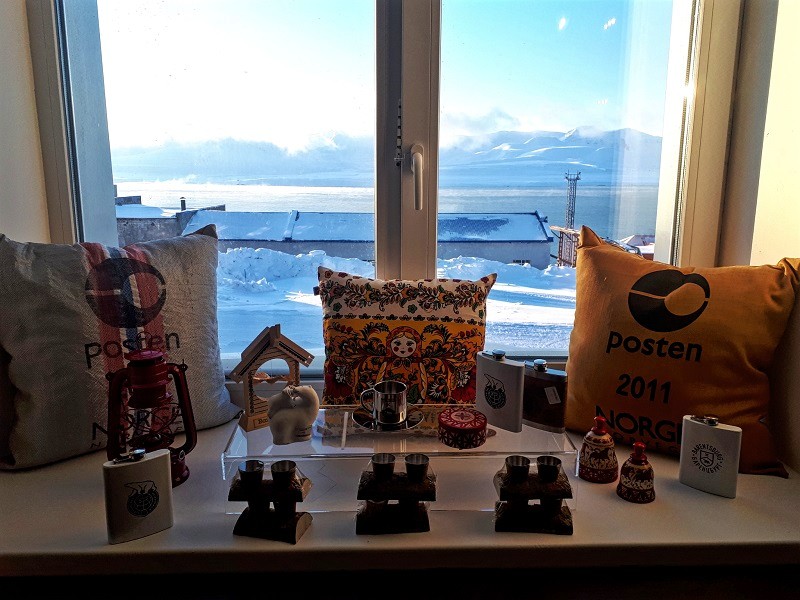

Modern buildings
Although many of the houses in Barentsburg hail from Soviet times, there are plenty of newly constructed modern buildings too.
One of these buildings is a large modern complex that houses a cultural centre and recreational facilities.
This includes an indoor gym, swimming pool and sports centre, which is even used to organise special tournaments on Svalbard, such as an annual football match held between the Russians of Barentsburg and the Norwegians of Longyearbyen.
Putting recent politics aside, the mutual relations on Svalbard between the local Russian community in Barentsburg and the residents of Longyearbyen are generally good.

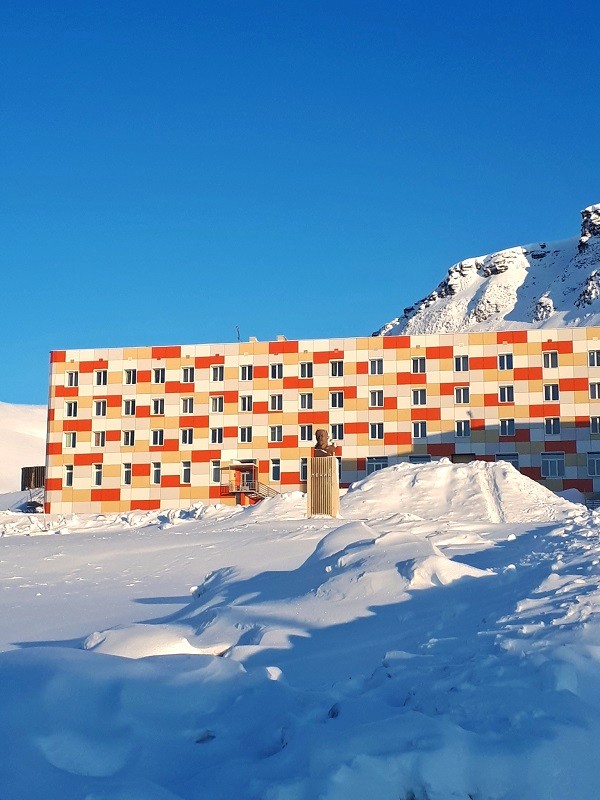
Lenin statue
A highlight of my visit to Barentsburg was the Lenin statue situated in front of a modern apartment block.
The bust of Lenin in Barentsburg is the second-most northern Lenin statue in the world, with the most northerly being located in the abandoned Russian coal mining town of Pyramiden, located a bit further to the north on Svalbard.
I’ve come across numerous statues of Lenin during my travels through the countries of the former Soviet Union, but this statue of Vladimir Ilyich Ulyanov was without doubt one of the most unique.
At that moment, I was thinking that it would make for a cool travel quest to visit the most unusual Lenin statues in the world.
In addition to the world’s northernmost Lenin statue in Pyramiden, there’s also the world’s largest Lenin head located in the Russian city of Ulan Ude, for instance.
However, when I realised that the world’s southernmost Lenin statue is located at the Pole of Inaccessibility on Antarctica (which is as remote as the name suggest!) it quickly dawned on me that such a quest would be nearly impossible.
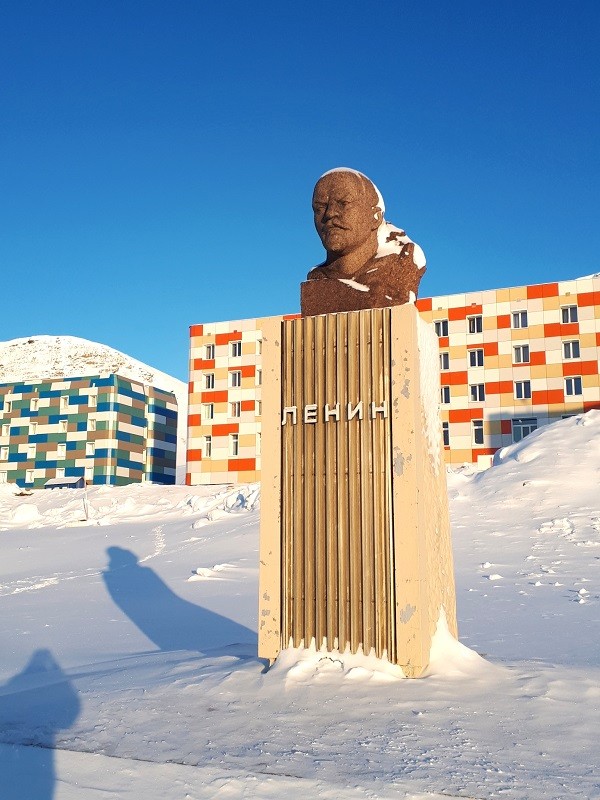
Russian consulate
Even though Barentsburg just missed out on having the northernmost Lenin statue, it does have the northernmost diplomatic mission in the world.
The Russian Consulate on Svalbard is located in Barentsburg.
In Soviet times, the Russian Consulate used to be housed in a neoclassical building with sky blue colours, but nowadays it occupies a more modern building right behind it.

Russian poem
One other notable building we admired during the tour around Barentsburg was the large, old wooden building down by the fjord.
This building has a cool mural with a Russian text and what looked like a sailor with some bright red lipstick on.
Despite the common misconception among visitors that the man is Barentsz or another Arctic explorer, this is not the case.
Actually, nobody in town has an idea who the depicted man really is – it’s probably just a generic portrayal of a sailor or explorer.
The Russian text next to portrait is a poem written by the Soviet-era poet Robert Rozhdestvensky.
The Rozhdestvensky poem, titled ‘Arctic Illness’, reads: “So wherever you end up traveling, on the brink of any spring, you will rave about the polar routes, you will see snowy dreams.”
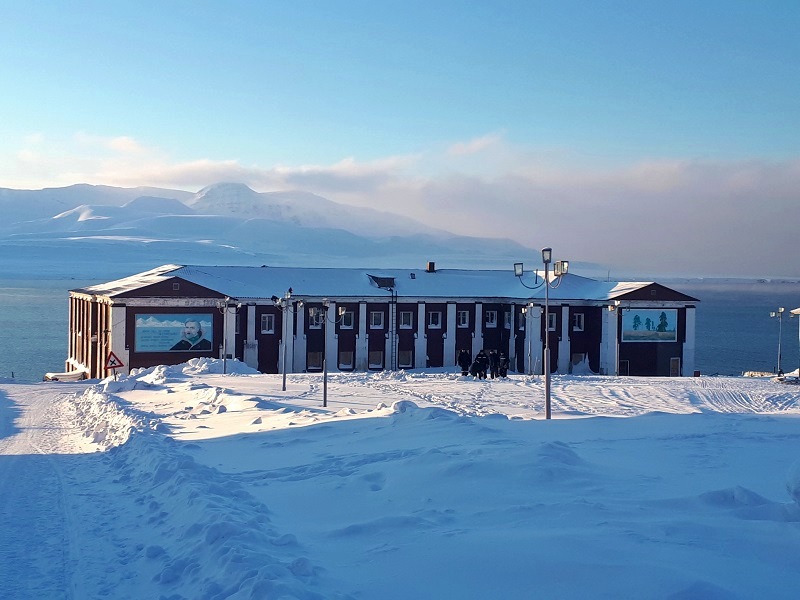

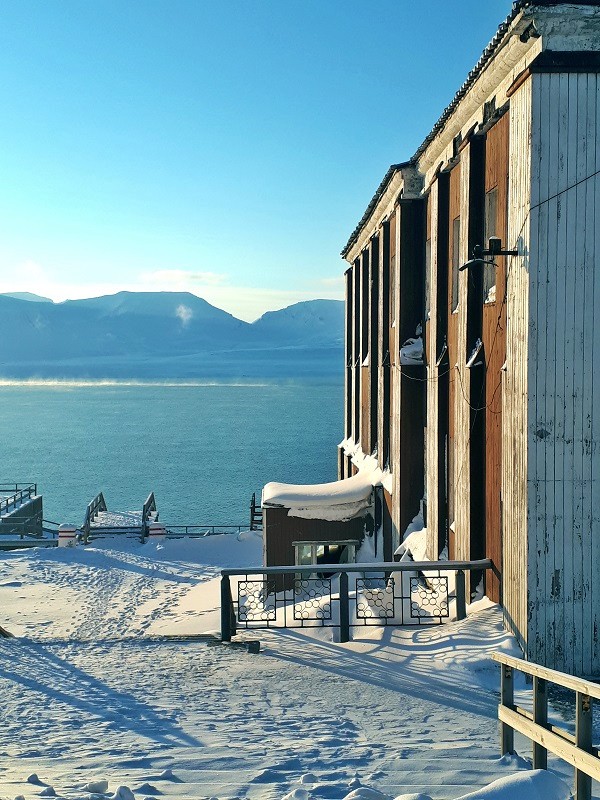

Fjord
When you’re standing near the fjord, it’s a perfect moment to take in the gorgeous surroundings.
Barentsburg really has a stunning setting on Svalbard, as from the town you have a perfect view over Grønfjorden and the mountain range behind it.
I did really love the winter setting as well.
The thin cloud layers over the fjord and mountains and the warm colours of the setting sun reflecting into the snow were magnificent.

Russian Orthodox Church
One of the last sights we visited in Barentsburg was the wooden Russian Orthodox Church.
The church is built in the style of the Pomors, an ethnographic Russian group from the Arctic shores of the White Sea who throughout history were among the most prominent of all Russian settles on Svalbard.
The Barentsburg church stands as a memorial for the 130 passengers (plus 11 crew members) of Vnukovo Airlines Flight 2801, which tragically crashed in 1996 into a Svalbard mountain during its final approach from Moscow Vnukovo to Longyearbyen.
The flight, which was operated by a Tupolev Tu-154, crashed due to an error of the pilots, who had lost all situational awareness.
Since the passengers were all on their way to the mining towns of Barentsburg and Pyramiden (which was still operational at the time), the incident had a huge impact on the local Russian community on Svalbard.
Up to this day, the crash of the Tupolev TU-154 remains the largest air disaster in Norway’s history.
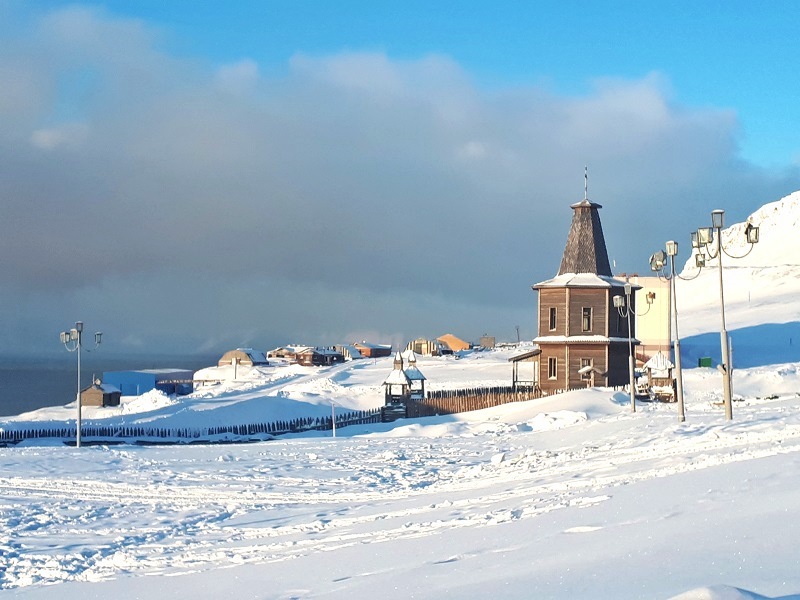
Back to Longyearbyen
After the tour we had some 20 to 30 minutes to walk a bit around Barentsburg on our own, buy souvenirs, or to warm up with a drink in the hotel.
I snapped a last few pictures of the town before going back to the hotel for the time-consuming task to get into my snowmobile gear for the ride back to Longyearbyen.
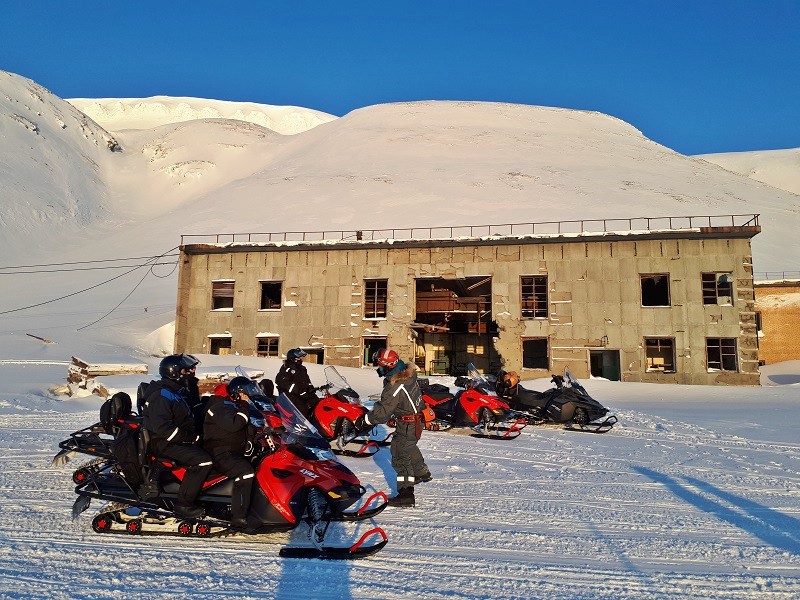
Conclusion
When you visit Svalbard, the Russian coal mining town of Barentsburg makes for a fascinating day trip from Longyearbyen.
Barentsburg can only be described as a Little Russia in the high Arctic territory of Norway, and exploring the unique culture and history of this coal mining town is certainly fun.
If you head to Barentsburg by snowmobile, you are also treated to some fabulous natural landscapes on your way.
It’s quite a long journey from Longyearbyen to Barentsburg and a day trip won’t come cheap, but the snowmobile trip to this Russian mining town for sure ranks high among my travel highlights.
Trip report index
This article is part of the ‘Snow Seeking in Svalbard: A Winter Trip Into the Arctic‘ trip report, which consists of the following chapters:
1. Low-Cost Travel to Norway: Oslo on the Cheap
2. Review: SAS Business and Gold Lounge Oslo Airport
3. Review: Mary-Ann’s Polarrigg Hotel, Longyearbyen
4. Longyearbyen: A Visit to the World’s Northernmost Town
5. A Svalbard Snowmobile Ride to Barentsburg
6. Barentsburg: A Visit to a Unique Russian Coal Mining Town (current chapter)
7. Pastel Winter: The Famous Blue Sunset Skies of Svalbard
8. The Long Way Home: Three Flights From Longyearbyen

